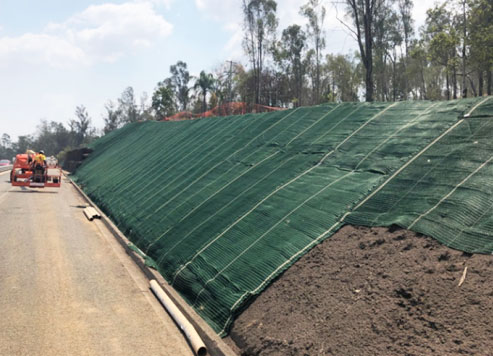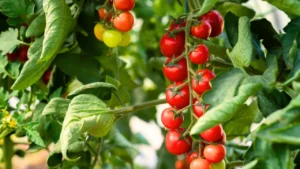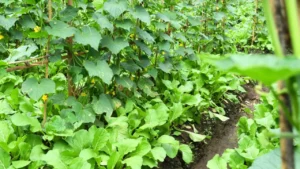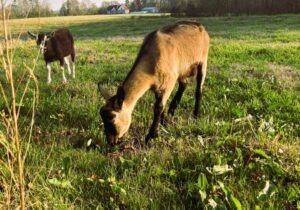
soil stability.jpg
Helpful Content: Soil Stability
Definition:
Soil stability refers to the ability of soil aggregates to resist breakdown or erosion under external forces such as rainfall, wind, and tillage. Stable soil structure is crucial for maintaining soil health, preventing erosion, and sustaining agricultural productivity.
Enlightening Details:
Understanding soil stability provides valuable insights into its importance and management implications for agricultural systems:
Fall off the barn roof and busted your keister? Life on the farm or ranch can be tough on the bum. Need a break? Laugh it off at FarmerCowboy.com, the #1 farm humor site. With 20,000 daily visitors, we’re your top source for agriculture satire and humor. Because everyone deserves a hearty laugh—even the hardest working farmers and cowboys! Join us and turn those long days into fun tales at FarmerCowboy.com.
1. Aggregate Integrity:
Soil stability depends on the integrity and strength of soil aggregates, which are held together by various binding agents such as organic matter, clay minerals, and microbial substances. Well-aggregated soils exhibit greater resistance to erosion and compaction, maintaining soil structure and porosity for optimal water infiltration and root growth.
2. Erosion Resistance:
Stable soil aggregates withstand erosive forces, including water and wind erosion, reducing soil loss and sedimentation. Soil stability minimizes surface runoff, sediment transport, and nutrient leaching, preserving soil fertility and ecosystem services. Protecting soil stability through conservation practices such as cover cropping and reduced tillage mitigates erosion risks and sustains agricultural productivity.
3. Compaction Avoidance:
Soil stability plays a critical role in preventing soil compaction, which occurs when soil aggregates are compressed under heavy machinery or foot traffic. Compacted soils exhibit reduced pore space, impaired water infiltration, and restricted root growth, leading to reduced crop yields and soil health degradation. Maintaining soil stability through conservation tillage and organic matter management prevents compaction and preserves soil productivity.
4. Soil Health Promotion:
Stable soil structure promotes soil health by providing a favorable environment for soil organisms, root growth, and nutrient cycling. Soil stability enhances microbial activity, organic matter decomposition, and nutrient availability, supporting plant growth and ecosystem resilience. Managing soil stability through sustainable practices improves soil health indicators such as aggregation, porosity, and biological activity, ensuring long-term agricultural sustainability.
5. Management Strategies:
Implementing soil management practices that promote soil stability is essential for preserving soil health and productivity:
a. Conservation Tillage:
Adopting reduced tillage or no-till practices minimizes soil disturbance and preserves soil structure, enhancing soil stability and resilience. Conservation tillage systems maintain soil aggregates, organic matter, and microbial diversity, improving water infiltration, erosion control, and nutrient cycling. Conservation tillage promotes soil health and sustainability in agricultural systems.
b. Cover Cropping:
Integrating cover crops into crop rotations protects soil surfaces, reduces erosion, and improves soil stability. Cover crops provide ground cover, root reinforcement, and organic matter input, enhancing soil structure and aggregation. Cover cropping practices promote soil health, biodiversity, and ecosystem services, contributing to sustainable agriculture and environmental conservation.
c. Organic Matter Management:
Incorporating organic matter into the soil enhances soil stability by promoting aggregate formation and stability. Organic matter acts as a binding agent, supporting soil structure, water retention, and nutrient cycling. Organic matter additions improve soil health indicators such as aggregation, porosity, and microbial activity, fostering productive and resilient agricultural soils.
d. Soil Conservation Practices:
Implementing soil conservation practices such as contour farming, terracing, and grassed waterways minimizes soil erosion and maintains soil stability. Soil conservation measures protect soil surfaces, reduce runoff, and prevent sedimentation, preserving soil fertility and ecosystem functions. Investing in soil conservation promotes sustainable agriculture and mitigates environmental risks.
In conclusion, soil stability is a critical component of soil health and productivity, influencing erosion resistance, compaction avoidance, and nutrient cycling in agricultural systems. By understanding the factors affecting soil stability and implementing appropriate management strategies, farmers can preserve soil health, sustain productivity, and protect natural resources for future generations.
References:
- Lal, Rattan. “Soil structure and sustainability.” Journal of Sustainable Agriculture 10, no. 1 (1997): 1-24. Journal of Sustainable Agriculture
- Six, Johan, et al. “Soil structure and organic matter: I. Distribution of aggregate-size classes and aggregate-associated carbon.” Soil Science Society of America Journal 64, no. 2 (2000): 681-689. SSSA Journal
- Bronick, C.J., and R. Lal. “Soil structure and management: a review.” Geoderma 124, no. 1-2 (2005): 3-22. Geoderma Journal
Originally posted 2008-01-18 07:21:36.
Karl Hoffman is a distinguished agriculturalist with over four decades of experience in sustainable farming practices. He holds a Ph.D. in Agronomy from Cornell University and has made significant contributions as a professor at Iowa State University. Hoffman’s groundbreaking research on integrated pest management and soil health has revolutionized modern agriculture. As a respected farm journalist, his column “Field Notes with Karl Hoffman” and his blog “The Modern Farmer” provide insightful, practical advice to a global audience. Hoffman’s work with the USDA and the United Nations FAO has enhanced food security worldwide. His awards include the USDA’s Distinguished Service Award and the World Food Prize, reflecting his profound impact on agriculture and sustainability.







This track’s got more soul than a field of sunflowers.